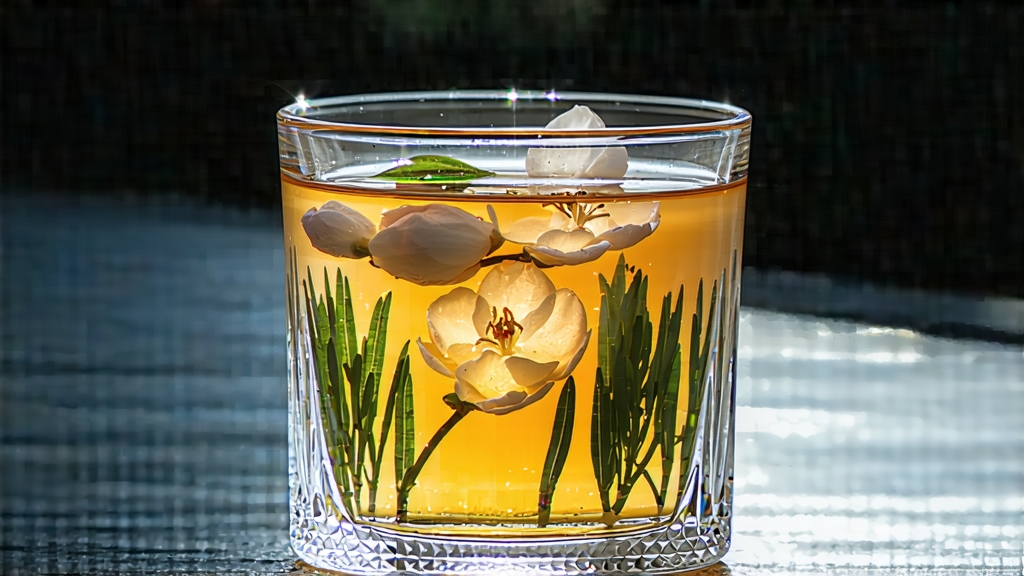
White tea is the most minimally treated of all China’s six great tea families, yet within that simplicity lies a universe of nuance. Among its three classic styles—Silver Needle, White Peony, and Shou Mei—White Hair Silver Needle (Bai Hao Yin Zhen) stands as the aristocrat: composed only of unopened leaf buds, silvery with down, plucked for a few precious days each early spring. To understand China’s tea imagination, one must first meet this quiet spear of moonlight.
-
Geography and Legend
Authentic Silver Needle comes from the coastal mountains of Fuding and Zhenghe in northeastern Fujian Province. Here, subtropical humidity meets mineral-rich red and yellow soils; sea mists drift inland at night, wrapping the tea gardens in a cool veil that slows growth and concentrates amino acids. Local lore claims the cultivar “Dai Bai” (Big White) was discovered in 1857 when a traveling scholar took shelter in a Buddhist nunnery. The nuns served him a tisane of wild buds so sweet that he pocketed seeds, planted them behind the temple, and the cultivar spread. Whether myth or marketing, the story captures the tea’s monastic aura: delicate, contemplative, slightly aloof. -
A Bud’s Journey: Craft Without Crafting
Silver Needle is harvested only between Qingming and Grain Rain (early to mid-April) when the buds reach 2.5–3 cm but remain unopened. Pickers work at dawn, shearing each bud with fingernails to avoid bruising. No rubbing, no rolling, no roasting—only two steps rule its life: withering and drying.
Withering occupies 36–48 hours on bamboo trays stacked like shallow drawers in drafty upper rooms. The buds lose about 70 % moisture, but more importantly enzymes initiate gentle oxidation, turning grassy aldehydes into floral lactones. Sun-withering is ideal: buds bask in weak early-spring light, then rest in shade, repeating the cycle. Rainy days force indoor withering using low-temperature ovens; purists detect a “baked” note they dislike. Finally, the tea is baked three times over charcoal embers not hotter than 40 °C, each pass lasting minutes, enough to drop moisture to 5 % while preserving the velvet down. The finished buds look like tiny ivory slivers dressed in silver fur—an appearance so prized that counterfeiters once sprayed talcum on lesser leaves.
- Sub-varieties and Vintage
Although Silver Needle is technically a single grade, micro-terroirs create subtle tribes. Fuding versions are plumper, with a bamboo-sap sweetness; Zhenghe buds are slimmer, yielding a deeper, quince-like liquor. Within Fuding, the villages of Taimu Shan (high altitude, foggy) produce buds with a cool menthol echo, while Hutou’s coastal gardens give a faint seaweed salinity.
Then there is age. Unlike most green teas, Silver Needle is eager to travel through time. Properly stored—breathable paper, no odors, 20–25 °C, 50 % humidity—it darkens from platinum to pewter and develops notes of dried apricot, sandalwood, and white pepper. A decade-old cake can fetch prices rivaling vintage Burgundy, its caffeine mellowed yet antioxidant levels rising as flavonoids polymerize.
- Brewing: The Art of Doing Less
Silver Needle punishes impatience. Its tight buds open slowly, demanding cool water and long steeps to coax sweetness without astringency.
Western ratio: 3 g per 250 ml glass teapot, 80 °C water, 5 min first infusion. The liquor glows like pale chardonnay; aroma is a blend of honeydew, fresh hay, and a whisper of pine pollen. Two more infusions follow at 6 and 8 minutes, each softer than the last.
Gongfu style reveals vertical storytelling: 5 g in a 120 ml gaiwan, 85 °C, flash rinse to awaken the buds, then 20 s, 25 s, 30 s… up to ten steeps. The first cups offer cucumber water and rock sugar; mid-steeps deepen into cashew cream; final steeps drift back to a mineral sweetness reminiscent of wet granite after rain.
Cold brew is summer’s secret: 4 g in 500 ml spring water, refrigerator 8 hours. The result is a